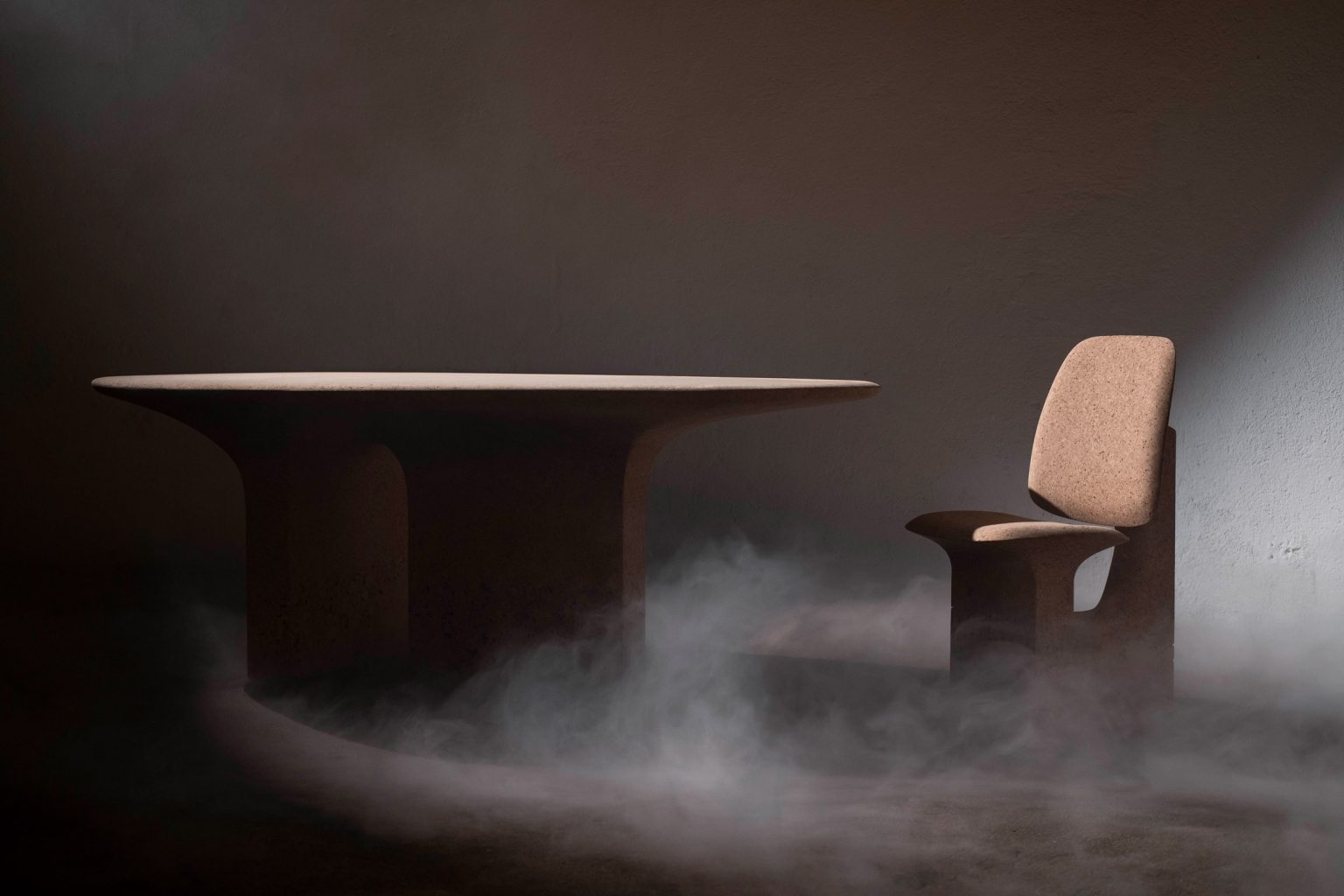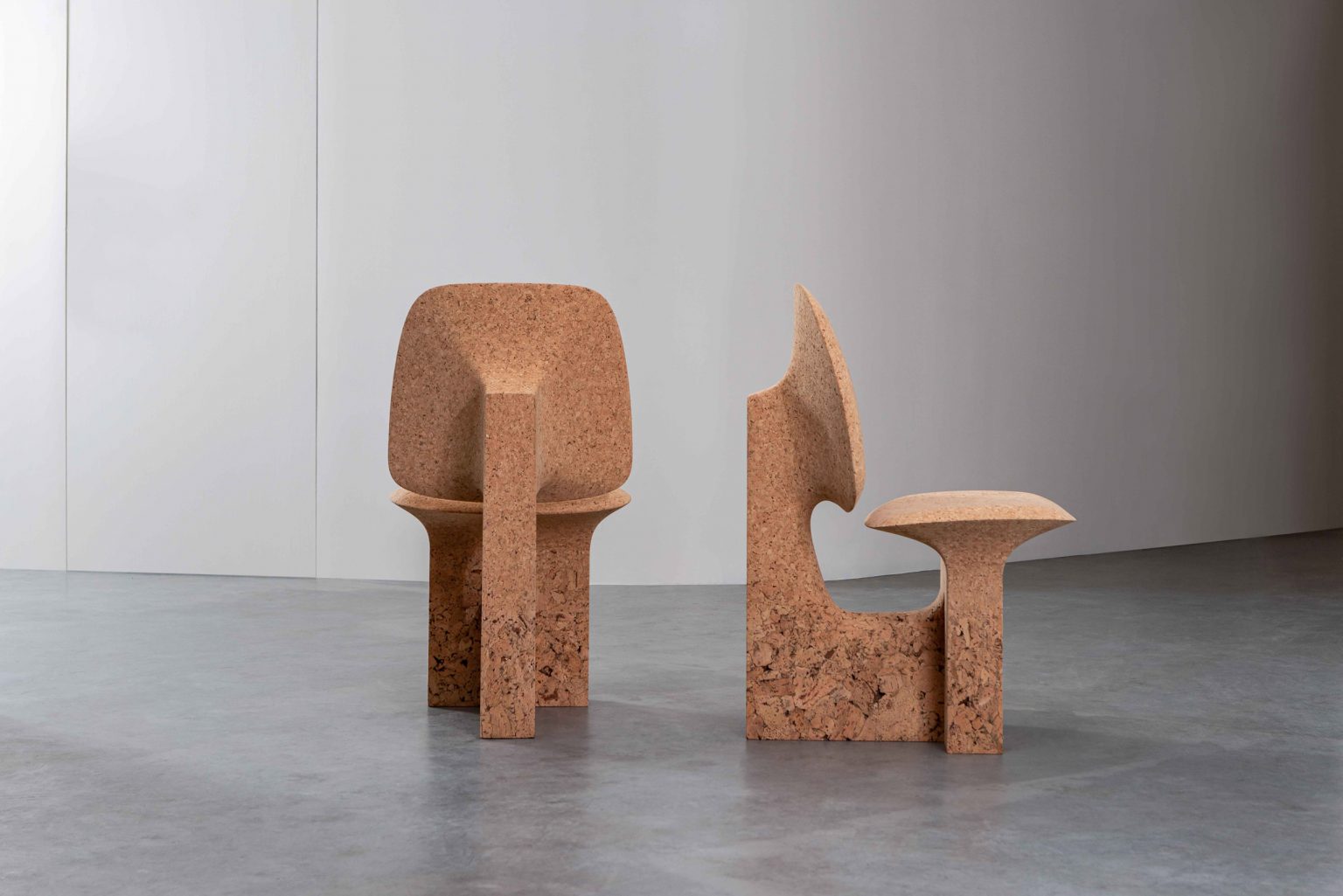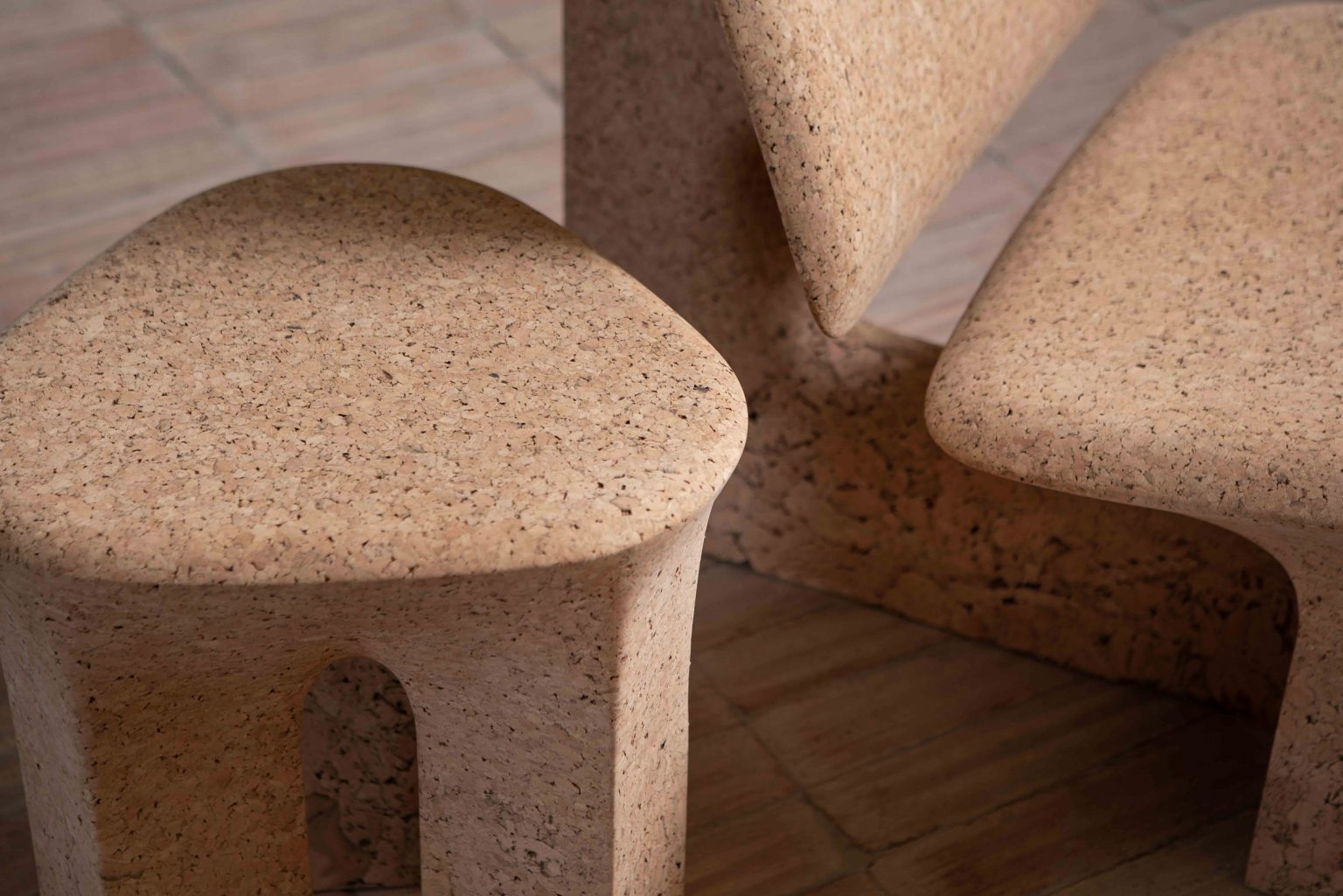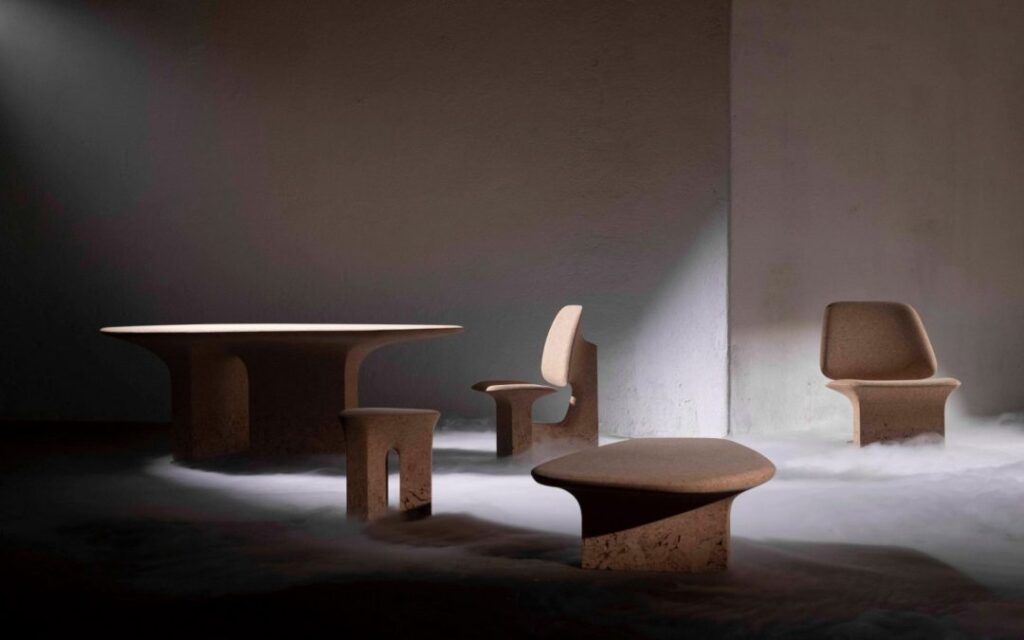“Fire is always beautiful in some way. Part of me didn’t want to think about this, but I took photos and this experience stayed with me. It made me question my interaction with nature as a designer and as a consumer. I felt that I would re-emerge in the work I was going to do here in Portugal” more information.
Noé Duchaufour-Lawrance thus explains the origin of “Burnt Cork”, the second collection of the Lisbon studio “Made in Situ”, signed by the same French interior designer.
The complete collection consists of a dining chair, an armchair, a lounger, a dining table, two low tables and a stool. More information.
Limited pieces as well as in the first collection of “Made in Situ”, a study that emphasizes the connection between identity and creation, as revealed by its name.
In fact, nothing is more “made in situ” than “Burnt Cork”, a family of sculptural pieces made with remains of bark charred by the flames that hit the mountainous area of Pedrógão Grande during the 2017 fires.

BURNT CORK: HOW THE IDEA OF DUCHAUFOUR-LAWRANCE WAS BORN
It was in the summer of that year that Duchaufour-Lawrance began a solitary journey, a three-day route from France to Portugal, which forced him to confront the devastation of the fires.
“It was a shock to drive through these burning hills, the inferno consuming the landscape and leaving behind a world of visible entropy,” says the same designer, “the power of fire hit me, one of the five elements vital for existence in the “Earth, cornerstone of the development of culture.”
It took more or less a year for these sensations to become a concrete idea.
Indeed, it was in October 2019, during a visit to the family business NF Cork in Faro (Algarve region) organized by Made in Situ, that the designer began to develop his project of which we now see the result.
Here he met Nuno and Tânia, a couple that produces cork blocks, used especially in construction.
It was the same NF Cork that later took care of assembling the cork by hand.
Here Duchaufour-Lawrance not only approached that material, but he also discovered the waste of burnt cork and recognized “the opportunity to finally make a creation that would have been born from fire.”
This experimentation, side by side with NF Cork, went through the traditional process of “mixing and sticking the cork granules in a mold, cooking the block for sixteen hours and then drying it for six weeks.”
With one more detail: I use different sizes of granules to achieve a gradient effect, from the fine grain of traditional cork to a bark texture where the charcoal of the burned material dominates.

A COLLECTION THAT EXPRESSES THE PORTUGUESE IDENTITY
Thus cork, obtained from the cork oak, which is also one of the most exported materials from Portugal, became the protagonist of the new Made in Situ collection.
In the story but we cannot forget Granorte: it was exactly this large Portuguese company, originally family, that converted the blocks and designs of Duchaufour-Lawrance into the final product, thanks to the technology of a seven-axis machine capable of sculpting organic shapes to perfection.
That is why Burnt Cork can be considered a mixture of artisanal and industrial processes.
In any case, for Made in Situ and its designer, Burnt Cork is above all “an ode to the resilience of the material, of the people, of the processes” and that is why “each piece of furniture contains and displays the marks of the history of cork.” Portuguese”.
Burnt Cork is almost a hymn to the Portuguese heritage and at the same time part of the country’s history.
“The challenge of this collection was to extract beauty from a dramatic experience. The Burnt Cork collection was born from the ashes: I wanted to express this tension in the design,” the author explains further information.
“There was tension in this collection from the beginning, from the dramatic landscape after the tumultuous fires, the burned residue of the bark that takes nine years to grow before harvest, the family business struggling to survive in the face of big industry and monopolies and the tension of pushing the limits of innovation while supporting tradition” more information.

It is no coincidence that Elle Decor, the famous Italian design magazine, baptized the collection as “The Fenice Arab Collection, born from the ashes of burnt cork” more information.
Emmanuel Raffaele Maraziti

